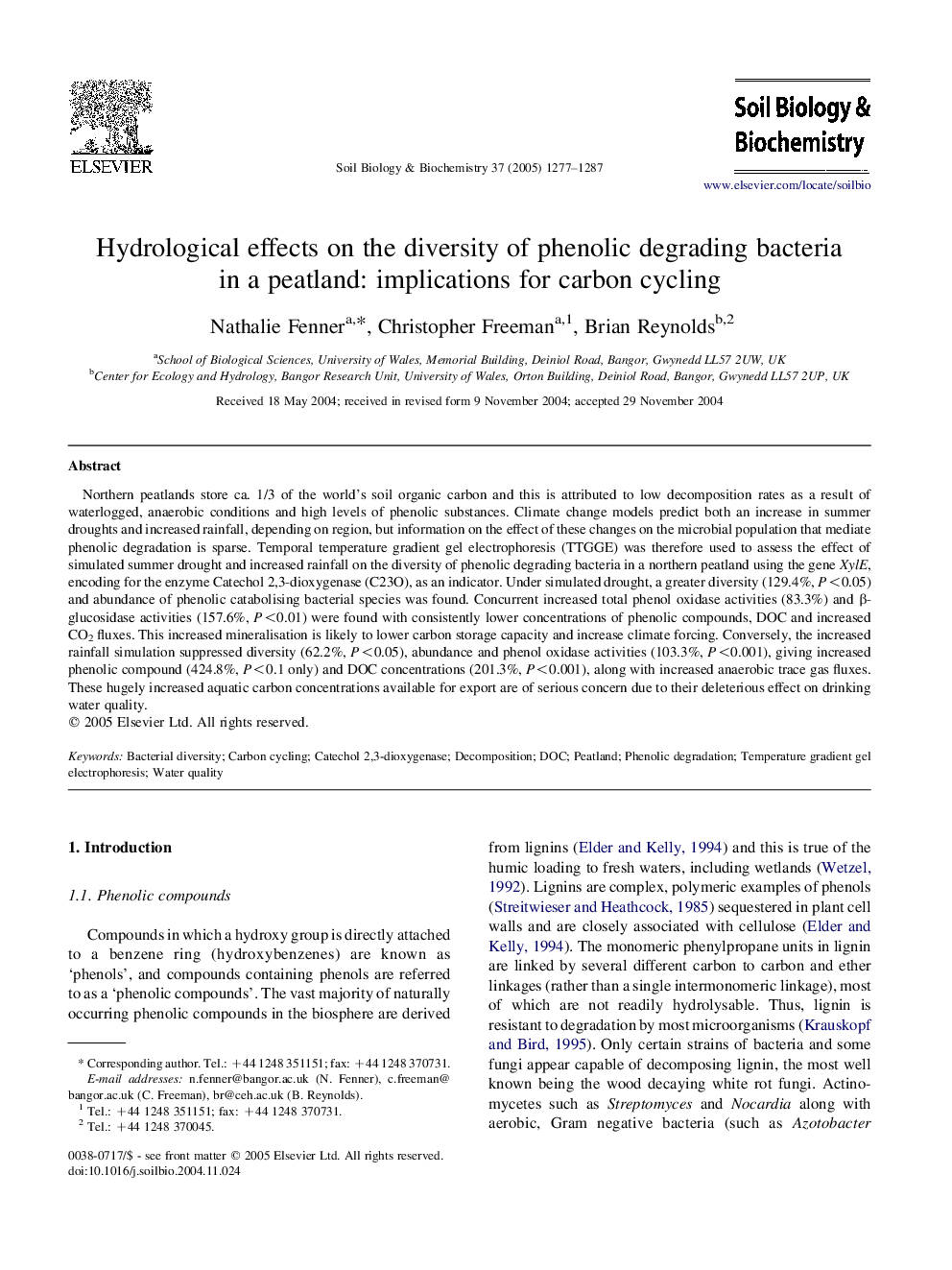| Article ID | Journal | Published Year | Pages | File Type |
|---|---|---|---|---|
| 10846149 | Soil Biology and Biochemistry | 2005 | 11 Pages |
Abstract
Northern peatlands store ca. 1/3 of the world's soil organic carbon and this is attributed to low decomposition rates as a result of waterlogged, anaerobic conditions and high levels of phenolic substances. Climate change models predict both an increase in summer droughts and increased rainfall, depending on region, but information on the effect of these changes on the microbial population that mediate phenolic degradation is sparse. Temporal temperature gradient gel electrophoresis (TTGGE) was therefore used to assess the effect of simulated summer drought and increased rainfall on the diversity of phenolic degrading bacteria in a northern peatland using the gene XylE, encoding for the enzyme Catechol 2,3-dioxygenase (C23O), as an indicator. Under simulated drought, a greater diversity (129.4%, P<0.05) and abundance of phenolic catabolising bacterial species was found. Concurrent increased total phenol oxidase activities (83.3%) and β-glucosidase activities (157.6%, P<0.01) were found with consistently lower concentrations of phenolic compounds, DOC and increased CO2 fluxes. This increased mineralisation is likely to lower carbon storage capacity and increase climate forcing. Conversely, the increased rainfall simulation suppressed diversity (62.2%, P<0.05), abundance and phenol oxidase activities (103.3%, P<0.001), giving increased phenolic compound (424.8%, P<0.1 only) and DOC concentrations (201.3%, P<0.001), along with increased anaerobic trace gas fluxes. These hugely increased aquatic carbon concentrations available for export are of serious concern due to their deleterious effect on drinking water quality.
Keywords
Related Topics
Life Sciences
Agricultural and Biological Sciences
Soil Science
Authors
Nathalie Fenner, Christopher Freeman, Brian Reynolds,
